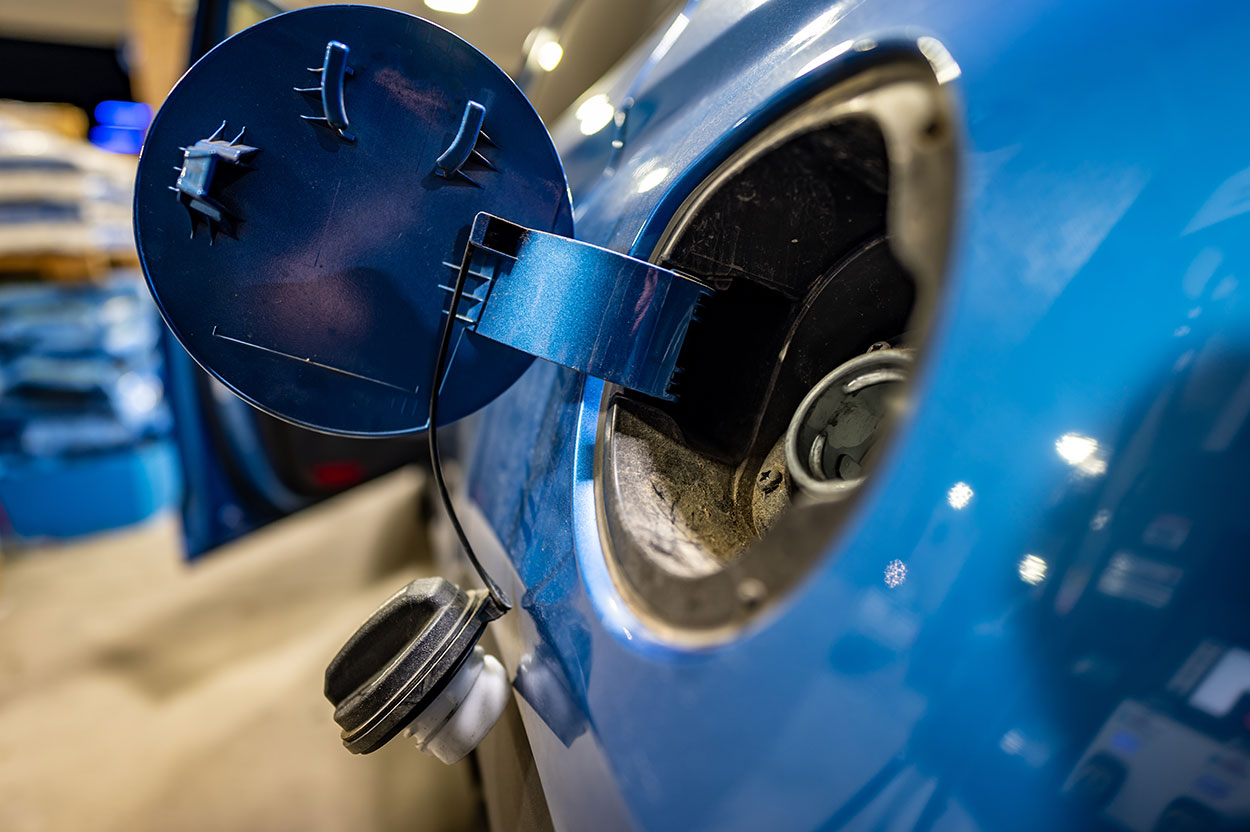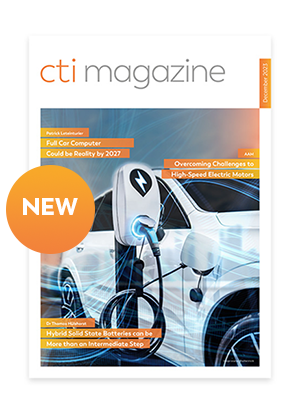
The driver’s having coffee, but what about the car? Electricity, hydrogen, e-fuel … which will it be? To hit ambitious decarbonisation targets quickly, we need to pursue different fuel options and use them in parallel. Then depending on the application, each option can play to its strengths – and offset the weaknesses of the alternatives.
Hydrogen has many fans – including at CTI Symposium Berlin
Battery electric drives are seen as today’s favourite, and the long-term winner in automotive mobility. But for many experts, hydrogen technology has huge potential too – for instance in fuel cell drives for heavy-duty applications and buses, or as a basis for e-fuel synthesis. At CTI SYMPOSIUM GERMANY 2022, this topic will have its own dedicated session and will also be discussed in the plenum. Among others, Michael Lohscheller (Nikola Corporation, USA) will be presenting his theses in a talk entitled ‘Hydrogen is the Future’.
Battery or fuel cell? Both, preferably!
Many customers shy away from battery-powered EVs because of charging times and the fear that ranges will not match their current diesel vehicles. In this scenario, a hybrid vehicle with fully charged batteries and a full tank of hydrogen would be an attractive solution.
Dr Stefan Caba (EDAG Engineering, Germany) will be presenting a tailor-made hybrid storage system for this new vehicle category. The system has a modular build that comprises hydrogen tanks, and batteries with similar geometries. Customers can combine up to ten modules for an optimal mix of both energy sources. This means they can use the battery flexibly for daily trips, but also refuel quickly with H2 on longer hauls. The system fits into a scalable battery vehicle platform that offers a general safety zone in the former battery housing. Special safety devices ensure module integrity in the event of an impact, while a protective wall of expandable graphite acts as a fire shield. An algorithm for cost-effective usage of both energy sources has been defined and tested. As Stefan Caba will explain, the results demonstrate high potential ranges for configurations with larger numbers of hydrogen tanks, and indicate fundamental opportunities for the use of hybrid fuel cell vehicles.
City bus climate tests – how BEV and FCEV compare
Cold weather makes electric vehicles less efficient. Taking a 12-metre city bus as her example, Michele Bilancia (Punch Hydrocells, Italy) will examine this phenomenon in depth and compare how BEV and FCEV perform. In low temperatures, a city bus needs large amounts of heat to warm the passenger compartment quickly and keep the temperature constant during normal operation. BEVs have to use valuable battery charge for this, thereby reducing vehicle range, while cold weather also impairs the performance of the high-voltage battery. By contrast, FCEVs are less sensitive to falling outside temperatures.
As Michele Bilancia will show, the BEV – FCEV comparison documents the differences in range and powertrain performance at low temperatures, and also shows how this parameter affects the usability of both drive solutions in a 12-metre city bus. Various aspects of the vehicle’s overall thermal architecture are also important. For both BEV and FCEV, Michele Bilancia will compare multiple cooling circuit layouts to show their impact on vehicle performance and efficiency. In the quest for high efficiency during winter operation, these tests provide crucial insights.
Solid oxide electrolysis (SOEC) tops the efficiency charts for hydrogen and e-fuels
Efficiency gains of up to 90 percent in green hydrogen production definitely sound promising – and as Josef Macherhammer (AVL List GmbH, Austria) will explain, solid oxide electrolysis (SOEC) can deliver. The process works with high temperatures, and is particularly efficient in scenarios where heat or steam are available as input. Coupling e-fuel production with this form of electrolysis is also beneficial: using waste heat from the synthesis process can boost production efficiency by 30 to 40 percent.
Based on ongoing development programmes, the speaker will examine two specific SOEC applications in detail. The first is a 1MW SOEC container plant for hydrogen production; the second is an e-fuel demonstration plant based on SOEC Fischer-Tropsch technology, with a diesel equivalent capacity of 120,000 litres p.a. Both projects show how green fuels can be produced sustainably and competitively in future. And as Jürgen Rechberger points out, we need them. “AVL is convinced that the fastest route to decarbonisation is a technology-open portfolio approach. This calls for hydrogen and e-fuels for different applications.” Battery-electric drives will definitely succeed ICEs and should be used wherever possible. However, green fuels can complement them in two ways: by helping to electrify heavy-duty applications (truck, rail, shipping), and by closing gaps in renewable electricity supplies.
Sky to Tank – is it necessary, reasonable and feasible?
Wherever possible, electricity from wind or solar sources should go straight into EV batteries; this is the most direct route to decarbonisation. But since both these sources are prone to fluctuation, we need additional storage technologies in order to better match supply and demand.
Dr Martin Härtl (Technical University of Munich, Germany) will focus on e-fuels as a viable solution to this challenge. E-fuels have similar advantages to fossil fuels (e.g. high energy density, safe and easy handling), but their low energy efficiency and high cost are often criticised. The speaker will differentiate between the respective opportunities and obstacles for various e-fuels in a business context, and will systematically compare their technical properties. He will discuss hydrogen, methane and methanol as promising platforms – either for direct use, or as a basis for downstream production in fields like specialty chemicals – along with various other oxygenates and hydrocarbons for replacing fossil hydrocarbons. For example, oxygenates with a C1 structure deliver soot-free combustion and are available with either high ease of ignition (for CI engines) or extreme knock resistance (for SI engines). According to findings from engine tests with functional e-fuels conducted at the Technical University of Munich, engines can achieve high thermodynamic efficiency while avoiding critical pollutant emissions such as particles and nitrogen oxides. Dr Martin Härtl will be bringing the latest research findings with him to Berlin.
CTI Symposium Berlin – discover new developments in theory and practice
Once again, this year’s CTI SYMPOSIUM GERMANY promises to be a fascinating event and a key forum for manufacturers and suppliers. As the year draws to a close, why not top up your inspiration tank with a mix of exciting information and lively discussion? In twelve sessions and in the plenum, the agenda has a clear focus: tomorrow’s automotive mobility. Participants can also dive deep into tech specs at the CTI SYMPOSIUM EXPO – and experience new solutions hands-on at our TEST DRIVE.
Welcome to Berlin!
